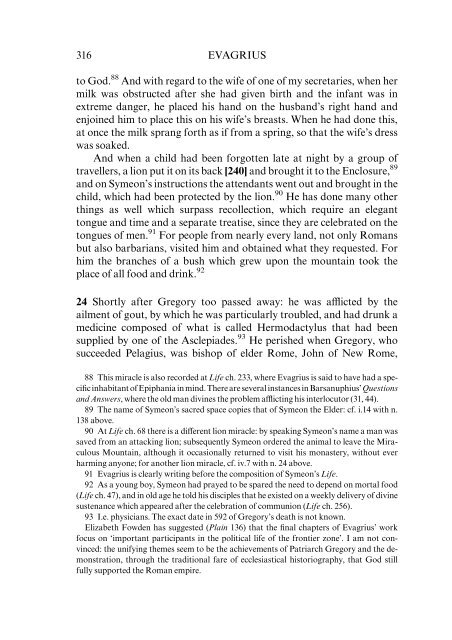


walford, … A History of the Church (London 1845). He says the whole city was taking part in the celebration at public cost this gives an idea of his prominence in Antioch.īibliography: evagrius scholasticus, The Ecclesiastical History, ed. Evagrius married a second time, and during the festivities occurred the great earthquake at Antioch of Oct. Simeon Stylites the Younger, advising him to abandon such ideas as displeasing to God. Although he had not disclosed his doubts to anyone, he received a letter from St. Pondering the death of his children, he was perplexed as to why the calamities did not happen to pagans with numerous offspring.

His wife, and many of his kin, as well as many of his town and country servants, had died of the plague. Two years before, the bubonic plague had come back for the fourth time during his life he had caught it on its first onslaught 52 years earlier, while still a schoolboy of six, and had lost a daughter and grandchild in the most recent visitation. He says that he published his book in his 58th year (594). One of his earliest memories was of being taken by his parents as a child of three to Apamea to kiss the relic of the true cross and see it exposed for solemn public veneration.

This information is derived from Evagrius's Ecclesiastical History. He published a collection (now lost) of miscellaneous compositions together with the patriarchal, official reports that earned him an honorary questorship from the Emperor Tiberius II he was given an honorary prefecture by Emperor Maurice for a panegyric on the occasion of the birth of his first son, Theodosius. Evagrius was attorney for Gregory, Patriarch of Antioch, drew up his official reports, and accompanied him as professional adviser when he appeared before a synod in Constantinople to clear himself of a charge of incest. He is orthodox and reliable (except in chronology), makes use of good sources (listed at the end of book five for books one to four), and was a contemporary and often eyewitness of events in books five and six his work is important and authoritative. Evagrius wrote an Ecclesiastical History that goes from the Council of Ephesus (431) to August 594 and includes secular history also. Sixth-century Byzantine lawyer and historian b.


 0 kommentar(er)
0 kommentar(er)
